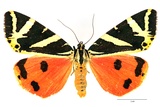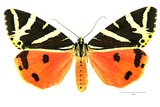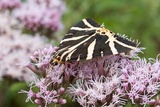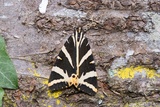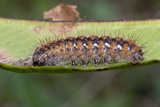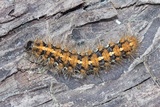Euplagia quadripunctaria (Poda, 1761) Species
Last modified: Sept. 22, 2025, 6:28 p.m.
Formerly only found in the southern regions of Belgium where it is common in calcareous localities. Around 2006 some records more to the north became known, more than certainly vagrants from the south. From 2018 on, the species is well established and fairly common in the entire country but it is still rare at the coast.
This species is considered Least Concern according to the IUCN Red List category for Flanders 2023.
Details
- Classification
- Family: Erebidae > Subfamily: Arctiinae > Tribus: Arctiini > Genus: Euplagia > Species: Euplagia quadripunctaria
- Vernacular names
- Spaanse vlag (NL), Jersey Tiger (EN), L'Ecaille chinée (FR), Spanische Fahne, Russischer Bär (DE)
- Synonyms
- Euplagia hera (Linnaeus, 1767)
- First mention in Belgium
- De Sélys-Longchamps E. 1837. Catalogue des Lépidoptères ou Papillons de la Belgique, précédé du tableau des Libellulines de ce pays. — — : 1–29. On page 29 (as Callimorpha Hera). view page
- Status
-
Native
Distribution
Bionomics
It hibernates as a small larva on the food plant. The adults are active during the day, feeding on flowers, later they come to light.
Flight periods
The adults fly from July till mid-September in one generation a year.
Observed on
- Host plant (species):
- Eupatorium cannabinum
- Host plant (genera):
- Urtica and Plantago
- Substrates:
- Herbaceous plants
The larva lives on various herbaceous plants, a.o. found on Urtica, Plantago, Rubus and Eupatorium.
